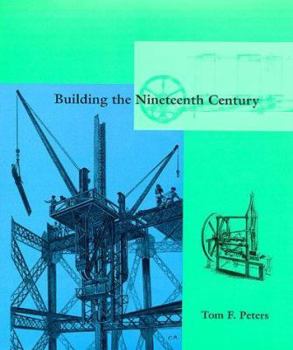Building the Nineteenth Century
Is there a culture of construction? To answer this question, Tom Peters crosses the traditional boundaries between civil engineering and architecture to look at how builders' thought processes influenced construction, and particularly at how construction thinking changed in the last century. The Sayn Foundry in Bendorf, a German town on the Rhine near the Dutch border, is a fascinating example of complex technological thinking. Although the structural detailing is typical of its period (1830), Prussian engineer and iron founder Karl Ludwig Althans used and varied the many architectural and engineering models at hand in a sophisticated and complex building with structural elements that can be read as advertisements, machine parts, religious form, or simply as building elements. The foundry, which is still standing, is just one of the many projects Peters examines in this broad synthesis of nineteenth-century technological thought and methods of design that form the basis of the modern built world. Through such examples, he traces the growth of technological thinking as one of our culturesup1;s chief modes of thought and establishes its primacy over other forms such as scientific or humanistic thinking as the major component of building design. Both celebrated and little-known works of architecture and engineering illustrate the evolution of a modern building process that brought together technical achievements with aesthetic, social, and cultural concerns. These include the first Thames tunnel project, the Mont Cenis Tunnel, the Conway and Britannia bridges, the Suez Canal, Kew Palm House, the Crystal Palace, the Langwies Viaduct, and the Panama Canal.
Format:Hardcover
Language:English
ISBN:0262161605
ISBN13:9780262161602
Release Date:January 1996
Publisher:MIT Press (MA)
Length:535 Pages
Weight:3.90 lbs.
Dimensions:1.4" x 7.9" x 10.3"
Customer Reviews
0 rating





